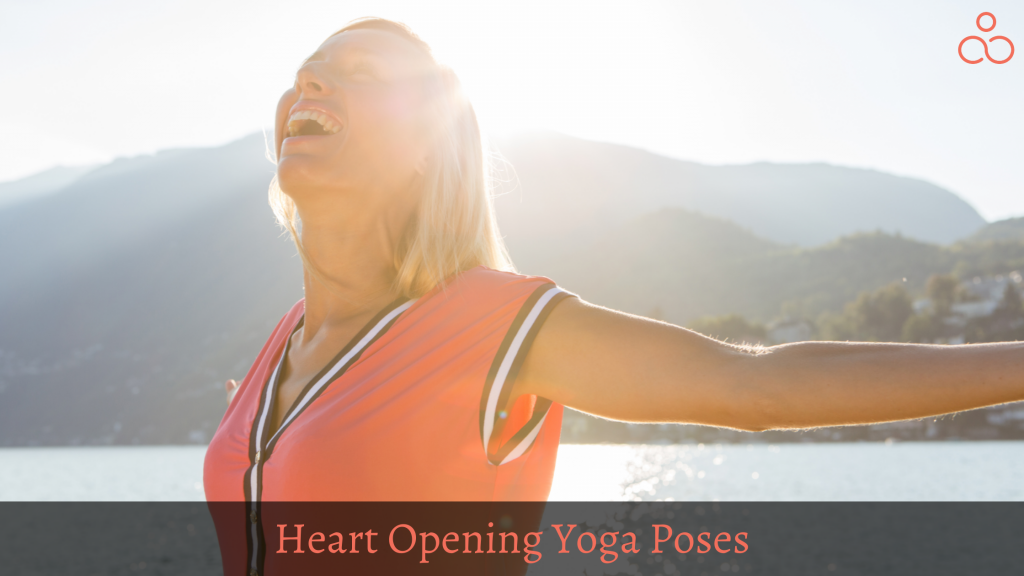Among all the benefits that Yoga promises, have you heard about its ability to bring love into your life? The potential to open your heart when you feel vulnerable?
Well, that is not an exaggeration.
This study has found that Yoga can reduce stress, anxiety, and depression and improve the quality of life.
Heart opening Yoga revolves around the heart Chakra, spiritual power in the human body based on Indian beliefs. It is believed the heart Chakra is the center for love, compassion, and emotions in our lives and bodies. When the heart Chakra is closed off, it can result in holding grudges, being unable to let go, being emotionally unstable, and having the inability to feel love or be loved. Also, you may think you are ready to embrace love, but your body language may say otherwise. The fear of heartbreak and the effort to protect our fragile hearts are often visible in our body language. You need to open your heart to let love in. Often, your mind and the inner voices may make that difficult to happen and thus heart opening Yoga is the perfect solution.
The primary focus of heart opening Yoga poses is to connect you to your heart Chakra by exposing or opening your heart as a gateway to your vulnerabilities. That means your chest is exposed during all the poses.
Afraid of opening your heart? This could be the reason
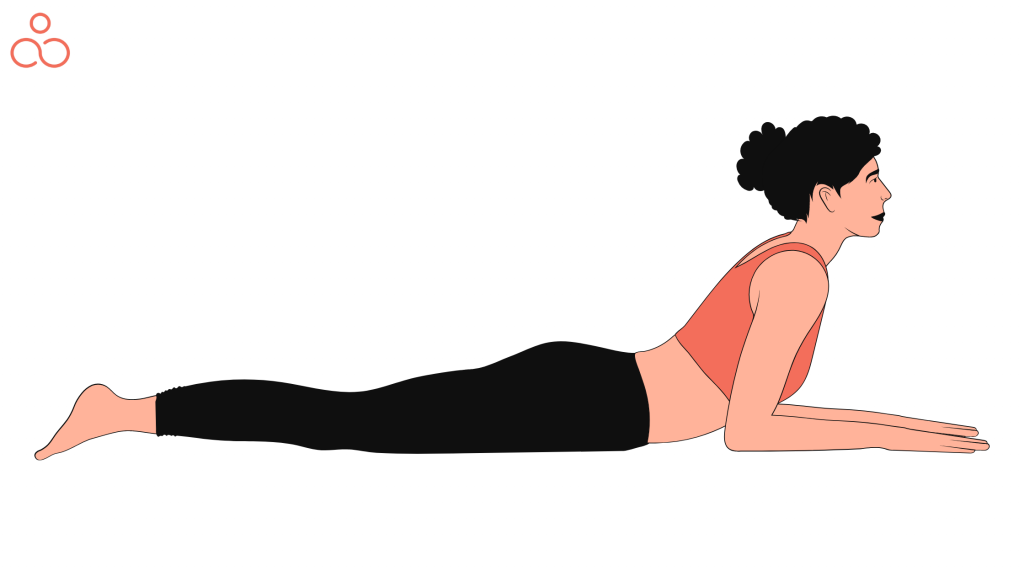
Many people contemplating taking Yoga lessons often avoid it because of the fear that they’d be told to open their hearts. It is scarier to be expected to breathe as you open your heart. This hesitation could be because of keeping your heart constricted and emotions bottled up too long. Traumas and years of feeling unloved or unworthy may make you feel as if you lack the resources and the emotional bandwidth to handle the barrage of emotions that you feel as you open your heart.
If you feel so too, begin with gentle heart opening sequences. These subtle moves can be a great starting point for your healing journey.
Slow down and start healing
It may seem unbelievable but heart opening sequences have the potential to heal years of trauma. They can help you love yourself and others and also offer opportunities to overcome pain and grief. The main goal of the practice is to listen to your inner feelings without feeling miserable. You need to embrace yourself when you are most vulnerable and find within you the courage to face your hurt. You will have to gather your inner resources and external support to tune into your bodily and emotional needs.
The goal of healing is to replace memories and experiences with new experiences and to restore energy, love and joy. Opening the front body allows you to identify what lives in you and push out what is consuming your energy. The process will help you feel that it is there, identify what it is and breathe through it and release it and connect to your inner self. The process is slow and will go stepwise. Sometimes, you may not feel anything but you will get there. Take it slow and let healing take its course.
Your body and emotions
Chinese medicine emphasizes that emotions are stored in specific organs. According to the theory, joy resides in the heart and small intestine, worry and overthinking in the spleen and stomach, sadness in the lungs and large intestine, fear in the bladder and kidneys and anger in the liver and gallbladder. According to the theory, one can unleash these emotions by stretching and working out the tissues around the organs that store them. People experiencing emotional releases and outbursts in Yoga sessions is not uncommon and this indicates the impact heart opening poses can have on you.
How to Expand Your heart Space With Yoga
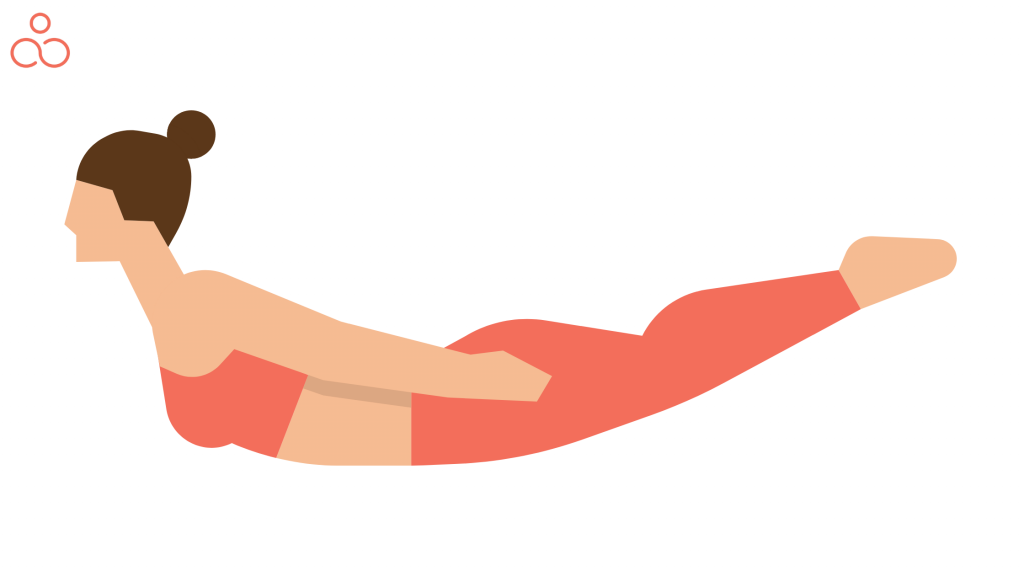
To expand your heart space with Yoga, you must mobilize your bony basket aka ribcage. The rib cage houses your heart and expanding it will help you to increase your heart space. Lateral bending, back bending and twisting are commonly used to expand heart space. Proper breathwork is important to gain the benefit of these poses. This is because breathing is associated directly with heart health. This study has concluded that proper breathing techniques can significantly reduce stress and thus the chance of cardiovascular morbidity.
Like all types of Yoga, heart opening Yoga can range from easy to extreme. Be mindful of your body capabilities at the time when you practice these poses. Pushing the body too far can cause injuries. It is wise to start slow and build up to it. Focus on the feelings that these poses generate within your body and strive to get past the discomfort.
This article will talk about heart opening Yoga and its benefits.
Benefits of heart opening Yoga
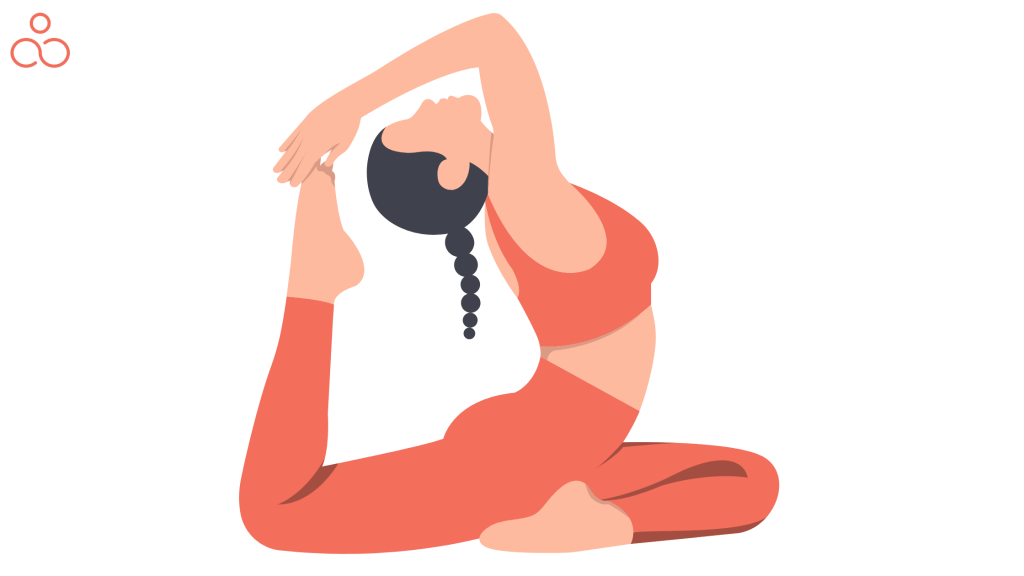
There are several physical and mental benefits to heart opening Yoga. Most heart opening poses are seated and back-bending poses that help to stretch your abdominal muscles, expand the rib cage (which makes accommodating the expansion and contraction of the lungs better), stretch your shoulders, and help with spine extension. These poses also help to increase lung capacity and thus are beneficial for people struggling with lung or breathing problems. It can also prove to be beneficial for those with poor posture, back pain, or shoulder pain. If you are feeling low, heart opening Yoga can also give you a burst of energy and improve your overall mood and motivation. They can help you to heal from long-term trauma and help you handle your emotions better.
Who are the heart opening Yoga poses for?
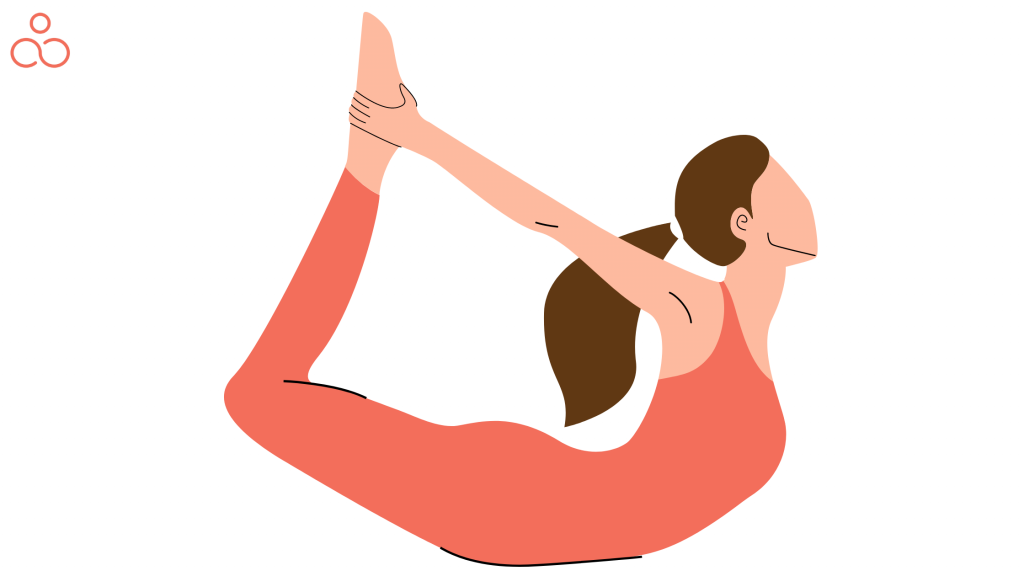
heart opening Yoga poses are for everyone. You do not necessarily need to have a traumatic past to get the benefits of these poses. They help to maintain good health, and posture and also keep day-to-day stress at bay.
Heart opening Yoga poses
There are various heart opening Yoga poses and each of them has unique benefits. Whether a pose is right for you will depend on your skills and comfort. Remember, if you start to feel uncomfortable or experience pain, stop immediately and adjust your pose or change to another pose. Some beginner heart opening Yoga poses are below. You just need a Yoga mat or some simple props for these poses.
Restorative heart opener: You can begin opening your heart through Yoga with this simple pose. Use a prop like a Yoga bolster, a blanket or a block. Place the prop in a way that it supports your back from the bottom of the shoulder blades when you rest over it. You can keep your legs in any position. You can bend your knees, place them in goddess pose or keep them outstretched. You can also support your head using another prop. Maintain the position for as long as you can, resting your back completely over the prop.
Camel Pose (Ustrasana)
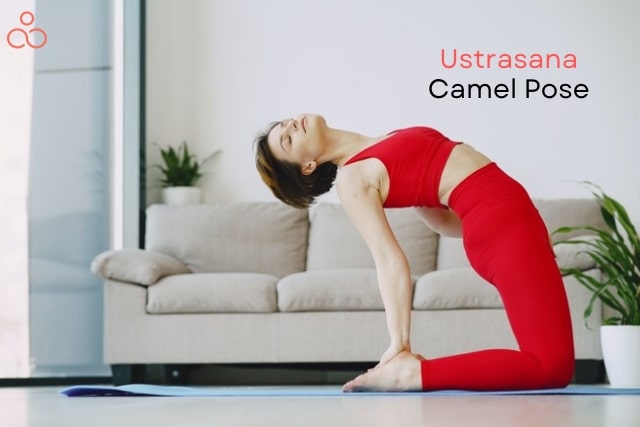
The camel pose is a great way to improve posture and relieve back pain. It is an excellent pose for desk workers and those with poor posture. It stretches your abdomen, shoulders, chest, hips, quadriceps, back muscles, buttocks, and hamstrings. It also helps to open your heart.
The pose requires you to place your knees on the floor. The legs should be hip-width apart. Align the hips over the knees and squeeze the thighs towards each other. Now breathe in and engage your lower belly. Take the tailbone toward the knees and thus create space between the lower vertebrates. Breathe in again and draw your elbows back towards each other as you lift your sternum. Let your rib cage expand. Maintain the position with chest raised, core engaged and the spine long. Tuck your chin and take your shoulder back, dropping your hands towards the heels. Next, drape your fingers over your soles and press the hand heels to the heels of your feet. Continue lifting through the sternum.
Beginners may not have the spinal flexibility to perform the camel pose fully. If you are one of them, place blocks outside each ankle and reach for them. You can also place your hands on the hips. Follow by lifting your shoulders and gently extending your head and neck backwards. Focus on the tip of your nose. Maintain this pose for 30-60 seconds.
To exit the pose, fold your chin into your chest and bring your hands to the hips in a way that the thumbs are on the sacrum. Now engage the lower belly, support the lower back using the hands and slowly return to the knees.
Half Camel Pose (Ardha Ustrasana)
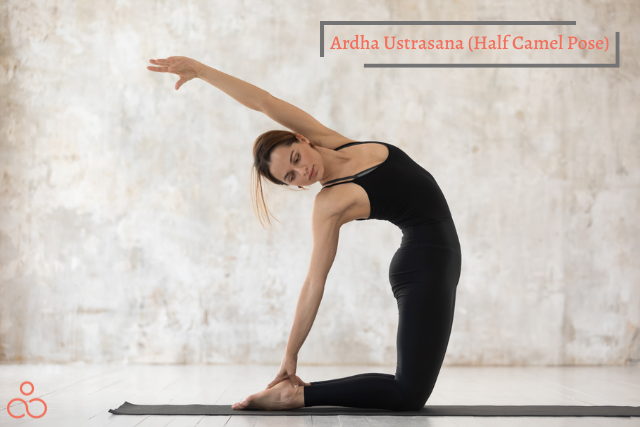
The steps for the Half Camel pose are similar to that of the Camel pose. However, while bending backwards, rest your hand on the top of your glutes instead of resting them on your feet or blocks. Push your hips forward as you lean your head back. While the Camel pose stretches your entire spine, the Half Camel pose is focused on your upper back.
Wheel Pose (Chakrasana)
The Wheel Pose primarily focuses on the mobility and flexibility of your spine and hips. It is also immensely helpful in opening your heart. Begin by laying down on your back with your knees bent. Place your palms by your ears with your fingers pointing towards your shoulders. When you inhale, press on your feet and hands to push your body up. Your body should curve with your stomach facing the ceiling.
The benefits of this Yoga pose range from strengthening the cardiovascular system to a plethora of mental and emotional benefits.
Bridge Pose (Setu Bandha Sarvangasana)
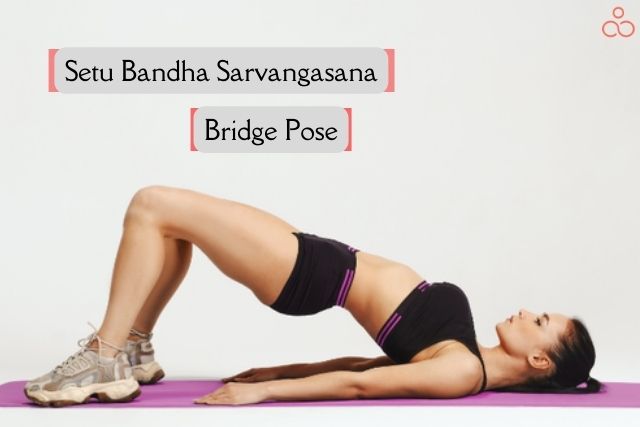
The Bridge Pose is a gentler version of the Wheel pose. The Bridge Pose concentrates on the flexibility and strength of your spine. Start in the same way as you would with the wheel pose. However, instead of putting your hands by your ears, put them by your hips, palms down. When you inhale, press down on your hands and feet to lift your body.
This pose can help relieve back pain and stretch your spine and abdominal muscles. It is a good pose to tackle neck and back pain and also offers mental and emotional benefits.
Warrior I Pose (Virabhadrasana I)
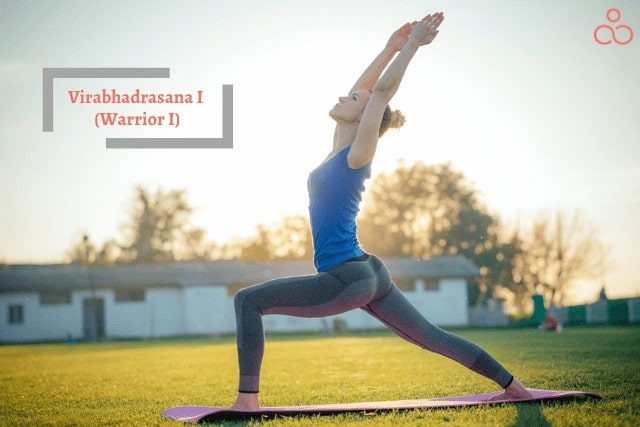
The Warrior One pose focuses on making your quads stronger and your hips flexible. Begin by standing flat on your feet. Place one foot forward and bend that knee as you lean forward. To open your heart, place your arms on your lower back. Bend backwards and move your hips forward to allow your chest to lift.
This pose is good for stretching your legs, neck, ribs, and spine.
Standing Backbend (Anuvittasana)
The Standing Backbend is a gentle heart opening Yoga pose that helps you determine your back bending capability. Start by standing firmly on your feet. Your feet should be about hip-width apart. You can rest your hands on your hips or heart. You can also stretch them out over you. Once you find a comfortable place for your hands, bend backwards and bring your shoulders towards each other. Keep your feet flat and firm on the ground and push your hips forward to avoid losing balance. Hold this position for a few deep breaths before using your core strength to go back to your original standing position. If you feel an imbalance, press your hips forward, adjust feet placement, or decrease the bend in your spine.
Fish pose (Matsyasana)
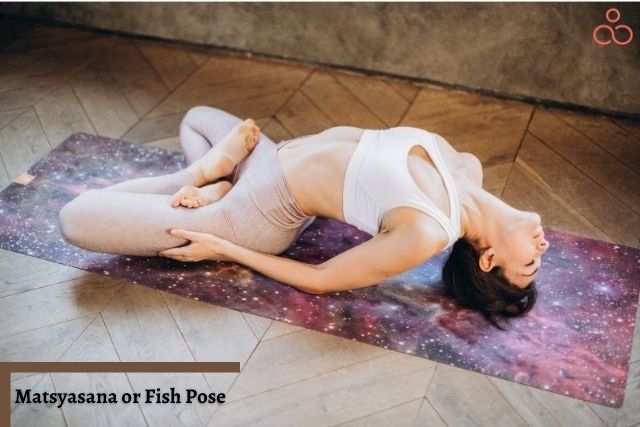
The list of heart opening Yoga poses is incomplete without Matsyasana or the fish pose. To strike this pose, lie on your back and keep your feet together. Place your hands under your seat and press your elbows down to lift your heart. The spine should make an arch. Try to keep the top of the head on the floor. Take a deep breath and open your lungs. If you wish to do this as a supported resting pose, take two blocks and place them under your head and between shoulder blades. The one under the head must be in the highest second whereas the other one on the lowest setting. This will allow you to relax completely.
Reverse Table pose (Ardha Purvottanasana)
Sit and bend your knees. Place your hands on the floor in a way that they point towards the feet. Press the hips upwards so the knees aren’t visible anymore. Allow your head to drop and look forward or upwards. Breathe out completely and take a deep breath in as you flex your thighs and push your hips up. Move gently with breath. Relax as you breathe out and push upward to open your heart each time you breathe in.
Crescent Moon Lunge (Anjaneyasana)
Begin this pose on your knees. Place one foot forward in a way that it is at a 90 degree angle. Position your hand on either side of the front foot. Make the legs wide apart by sliding the other foot back. Take the hands and place them on the front knee. Now straighten the arms and your spine will take a crescent shape. If you feel comfortable, reach the arms up and lean behind a bit. Relax your shoulders and lengthen the spine when you breathe in. Reach up when you breathe out and get back. Ensure you spend the same amount of time with your other foot in the front.
Standing Star Pose (Utthita Tadasana)
If you are feeling low in life, this simple pose is a splendid reminder that you are a beautiful creation. It kindles in you a love for yourself and instills a confidence that you totally deserve love. Place your feet firmly on the floor and stand with your legs wide apart. Now stretch your arms in an embracing position or take them toward the sky. You can strike a pose resembling the capital letter X. With a deep breath imagine yourself as a shining star that makes up a beautiful constellation. Right after the pose, you will be ready to take on the world with your sparkle.
Cat-Cow Stretch (Bitilasana Marjaryasana)
The cat-cow exercise can help you figure out the distinction between spinal extension and flexion. Draw your heart deep into the chest in the cat position and fully expand it in the cow position. The cow position is extension i.e heart opening.
Visualize a string running through the chest near the sternum and going towards the ceiling through your back. In the cat pose, the string will pull the center of your chest up and in the cow, it will pull the sternum down.
Sphinx Pose (Salamba Bhujangasana)
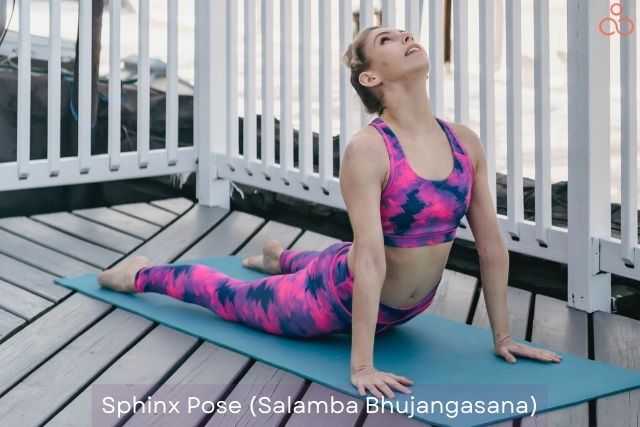
Many Yoga poses require you to draw your chest through your shoulders. The Sphinx pose is a great way to learn that and also one of the best heart opening Yoga poses. Extend your spine by pressing strongly into your forearms. This will help you to make space for the chest to go forward. Roll your shoulders towards the back and continue moving them away from the ears. Isometrically, draw your palms toward your body without moving them to swell your chest.
Supine Spinal Twist (Supta Matsyendrasana)
The supine spinal twist is an effective pose to stretch the front of your chest. Start by lying down on your back and bending your knees. Place the soles of your feet on the ground in a way that the knees point to the ceiling. Press the feet to raise your hips off the floors and move them by nearly an inch to your right. This is an important step on the twist as it allows you to stack the hips. Breathe out and pull your right knee towards your chest. Stretch the left leg flat on the ground and left foot flexed. Breathe out and pull the right knee through your midline towards the left of the body. This time the right hip will be on top of the left hip. Hook the right foot behind the left knee if that is comfortable for you. Now open the right arm to the right and keep it aligned with the shoulders. Rest the left hand on the right knees or stretch it out to create a T-shape with your arms. The palms should face the ceiling. Turn the head to your right and look over your shoulder to the right fingertips. If you feel discomfort in your neck, skip this step. Exhale and release the left knee and right shoulder towards the ground. Maintain the position for 5-10 breaths. To release the pose, breathe in and roll onto your back while bringing the right knee into the chest. Take both legs to the floor and let your spine rest for multiple breaths before moving to the other side. If you are doing it specifically to open your heart, focus on keeping your shoulders on the floor. Doing so may take your knees off the floor but that is normal.
Cobra Pose (Bhujangasana)
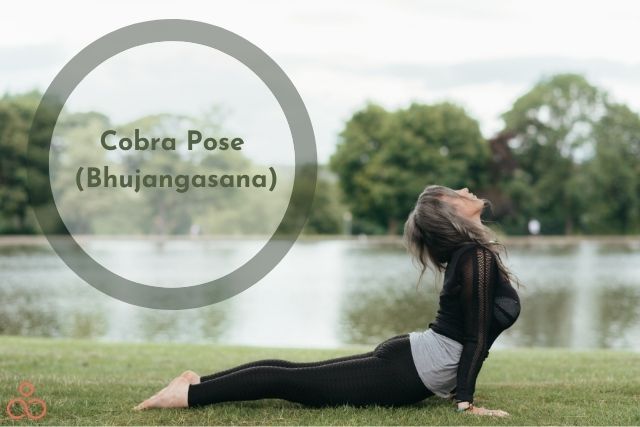
The cobra pose requires you to roll your shoulders back. Keep your shoulders away from your ears. Inhale and lift your chest above the ground without pressing into your hands. Now exhale and take the forehead to the floor. Repeat the cycle twice by inhaling to lift the chest and exhaling to lower it. This repetition will ensure that you work the muscles in your back so they help you to lift up higher every time you try.
Warrior II Pose (Virabhadrasana II)
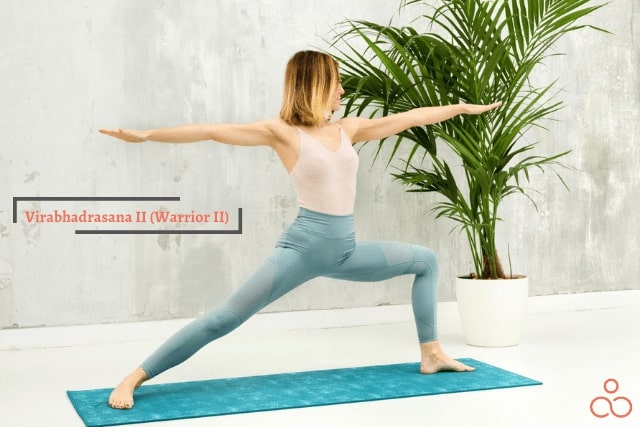
The heart opening capability of the warrior two pose is not so obvious but it helps to create expansiveness across the chest. The pose focuses majorly on the legs instead of the arms and torso. Be attentive and avoid getting into the regular standing posture as it is rounded towards the front. Roll the shoulders down and ensure the back doesn’t hunch. Reach out through the fingertips and make space in the chest.
Extended Side Angle Pose (Utthita Parsvakonasana)
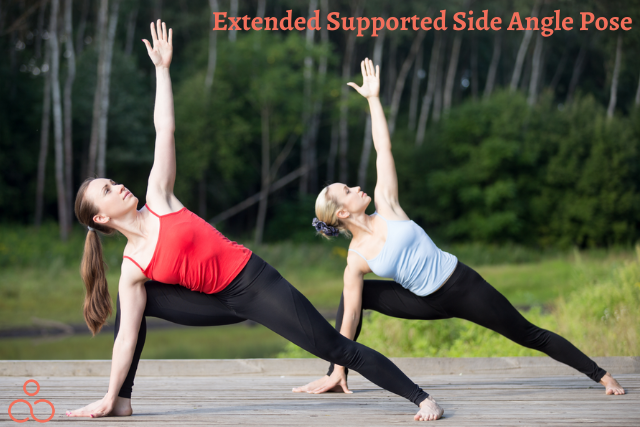
While this pose should be a heart opener, it needs you to be extra attentive to ensure that the chest doesn’t turn down as you try to place your hand on the floor. You can place your forearm on the thigh in a way that the palm faces up. The arm will be at a right angle. Reach up and make space.
Triangle Pose (Trikonasana)
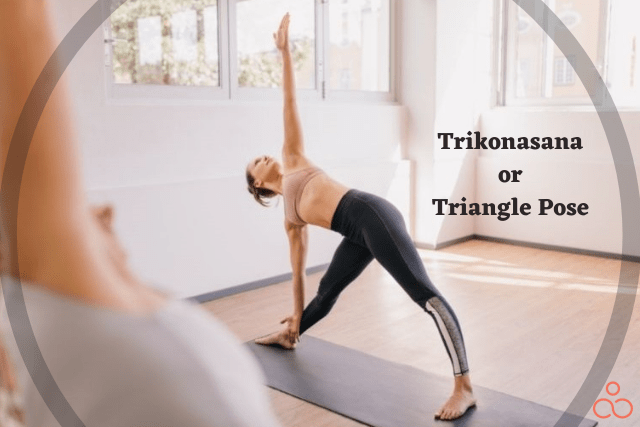
The triangle pose is similar to the extended side angle pose. The caveats are the same too. In this pose, you can take your hand high up on the front leg or on a block if that offers more expansion on the chest.
Another variation can be to try dropping the lifted arm behind the back and trying to catch hold of the inner thigh. This hold can help to increase the chest opening.
Half Moon Yoga Pose (Ardha Chandrasana)
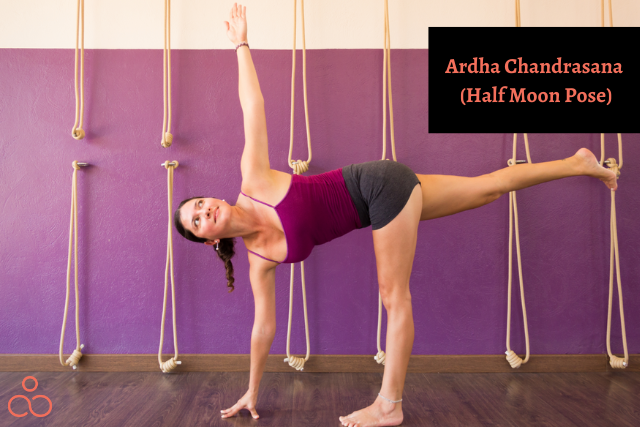
Make sure that raising your arm is the result of the opening of your chest toward the ceiling. As you lift your arm, rotate your chest towards the sky with the twist coming from the waist. Rotate your chest fully before you raise your arm.
Try placing the hand of your lifted arm onto your own shoulder for a self-assist to encourage it back before straightening your arm upwards.
Conclusion
Heart opening Yoga poses have several physical, emotional/mental, and spiritual benefits. The benefits can be being more open to love, decompressing your spine, increased lung capacity, increased flexibility in your spine, increased spine strength, bursts of energy, and positivity.
Most heart opening Yoga poses are backbends. When you backbend to open your heart, concentrate on the upper and middle parts of the spine instead of the lower back. You will find that the cervical spine is the most flexible and the thoracic spine the least flexible.
Both old and young people can do Yoga backbend poses.
Heart opening Yoga can help you if you experience back pain or stiffness if you work a job where you are constantly sitting or hunched over.

